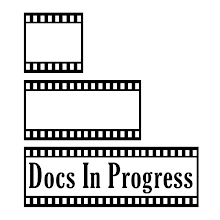While we don't generally make a point of doing cross-promotions for other documentary events and activities on our blog, we did want to share something we think is a unique and worthy opportunity for emerging documentary filmmakers...
The Garrett Scott Documentary Development Grant will fund two first time documentary makers for travel and accommodations at the Full Frame Documentary Film Festival, April 12-15, 2007. For four days, grant recipients will be given access to films, participate in master
classes and be mentored by experienced filmmakers.
About the Grant: Garrett Scott made a distinctive mark in documentary films during his short career. Without any formal training in film, he directed CUL DE SAC: A SUBURBAN WAR STORY, examining the case of a methamphetamine addict who stole a tank from an armory and went on a rampage through the San Diego suburbs. The film prompted Filmmaker
Magazine to cite Scott as one of 25 New Faces of Independent Film. He went on to make OCCUPATION: DREAMLAND, co-directed with Ian Olds, about U.S. soldiers in Falluja, Iraq. It won prizes at Full Frame and the Independent Spirit Awards. Both films were broadcast by the
Sundance Channel.
In 2005, Scott died of a heart attack at age 37. His friends, family and colleagues established this development grant to help other emerging filmmakers reach their potential. The grant's
selection committee looks especially for filmmakers who somehow fulfill Scott's example, by bringing a unique vision to the content and style of contemporary documentary making.
Criteria: Applicants must be a U.S. citizen or green card holder, living in the continental United States; any age 18 or older. "First time filmmaker" means someone who is in the early stage of their documentary career and not yet received significant recognition (such as major festival play or broadcast). All applicants should anticipate finishing their first project by March 2008. You can still qualify as a "first time filmmaker," even if you've made shorts or student projects or worked professionally as a crew member on other people's films. Or if you've recently completed a documentary that hasn't been released yet. The grant is open to students and
non-students alike.
How: Applicants should send a 2 page letter addressing these areas:
1) Project summary: Describe the documentary you're working on. It doesn't matter whether the film is a short or a feature. Describe the characters, structure, visual approach and what stage you're at.
2) Director's statement: Describe how you came to filmmaking and how you've trained as a filmmaker. It doesn't matter whether you went to film school or are self-taught. Describe what you want audiences to take from your film.
In addition, if applicants have a 5-10 minute sample of their work or work-in-progress, please send that as well on DVD or VHS (NTSC format). A sample work isn't required to apply. But if the selection committee has to choose between several strong applicants, the sample work will become a factor in making the decision.
Submit two copies of both the letter and work sample along with your...
Name:
Address:
Phone:
E-mail:
Send to:
Full Frame Documentary Film Festival
324 Blackwell Street. Suite 500
Washington Building, Bay 5
Durham, NC 27701
attn: Garrett Scott Documentary Grant
Deadline: Applications must be postmarked by February 5. Applicants will be notified by email in mid-March.
More information: http://fullframefest.org/call/garrettscottgrant.php



